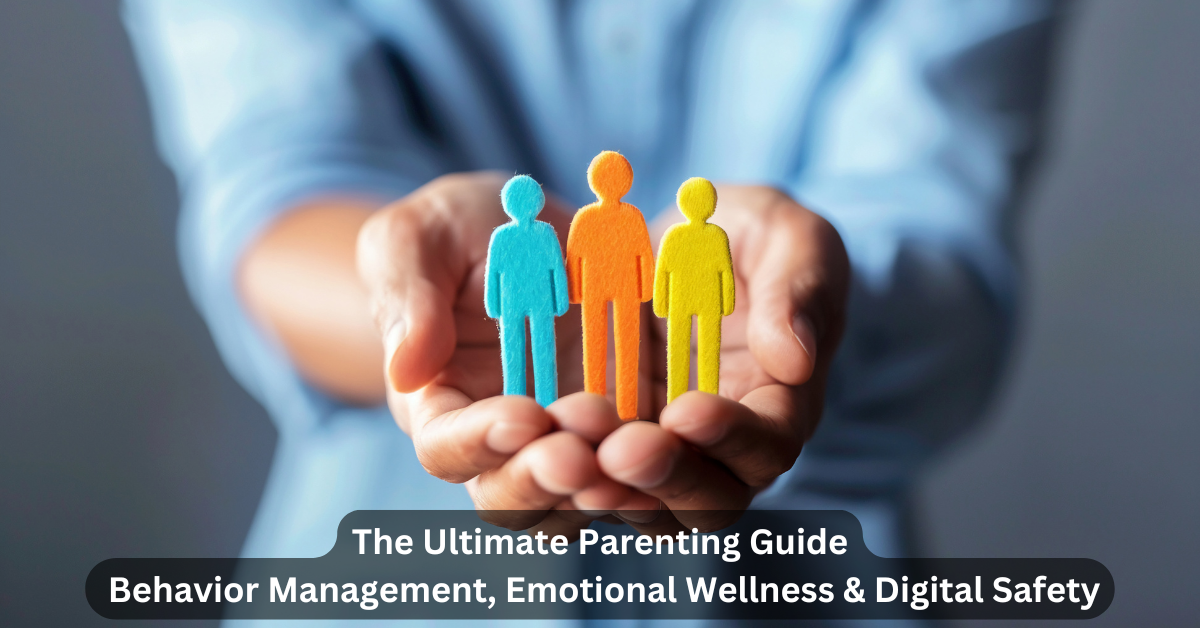Parenting in today’s fast-paced digital age is more demanding than ever. Between balancing work, family responsibilities, and your child’s emotional needs, it’s easy to feel overwhelmed. This guide provides practical strategies for managing behavior, understanding emotional and behavioral challenges, and ensuring digital safety in a connected world.
Understanding Family and Children Dynamics
A child’s behavior starts with the environment at home. Family dynamics—both positive and negative—shape emotional well-being and personality development.
The Role of Home and Family
Children raised in supportive homes often develop resilience, empathy, and problem-solving skills. Conversely, chaotic or neglectful environments can lead to emotional and behavioral disorders.
👉 Example: A child who feels heard at home is less likely to show aggression at school. Open conversations and a secure family environment build trust and reduce disruptive behavior.
Healthy Communication
Active listening, validating emotions, and encouraging open conversations build trust. For instance, instead of dismissing an “angry child,” parents can acknowledge the anger and guide the child toward healthy expression.
Identifying and Handling Behavioral Challenges
What Defines a “Problem Child”?
A “problem child” isn’t inherently bad. Often, behavioral challenges reflect unmet needs, stress, or underlying conditions. Signs may include:
• Frequent tantrums 😡
• Aggression toward siblings or peers
• Disrespectful language
These behaviors signal that the child needs guidance, not punishment.
Common Behavioral Problems in Kids
- Anger Issues: Outbursts or yelling when frustrated
- Defiance: Ignoring house rules or refusing directions
- Disruptive Behavior Disorder: Persistent negativity and disobedience at school and home
Emotional and Behavioral Disorders Explained
Emotional and behavioral disorders often overlap, making them harder to identify.
• ADHD: Trouble focusing, hyperactivity, and impulsive actions
• Anxiety Disorders: Excessive worry or fear of social situations
• Disruptive Behavior Disorder: Ongoing aggression or refusal to comply with authority
✅ Early intervention—through therapy, counseling, or school-based programs—improves outcomes and prevents long-term struggles.
When to Seek Professional Help
If your child’s behavior interferes with school, friendships, or family life, it may be time to seek help.
• Mental health professionals can provide therapy and coping strategies.
• Pediatricians may recommend behavioral assessments or counseling.
👉 Example: A child who constantly disrupts class may benefit from behavioral therapy rather than repeated punishments.
Positive Proven Behavior Management Strategies
Parenting Techniques That Work
- Set Clear House Rules: Children thrive on consistency. Clear boundaries reduce confusion.
- Positive Reinforcement: Praise or reward good behavior instead of focusing only on mistakes.
- Time-Outs: Use time-outs for calming down, not as punishment.
- Encourage Emotional Expression: Teach children to use words like “I feel upset” instead of acting out.
Behavior Management Systems
Parents can use reward charts, point systems, or family-based goals to motivate kids. For example, “five stars for good behavior = weekend movie night.”
How to Be a Good Parent in the Digital Age
Technology brings unique parenting challenges. Social media, gaming, and online content all influence children’s behavior. For insights into managing these challenges, read this article on parenting in the digital age.
Modern Childrearing Tips
- Balance empathy with discipline
- Encourage resilience by teaching problem-solving
- Set tech boundaries, such as “no screens during dinner.”
Using Parental Control Software
Digital safety is as important as physical safety. Children spend hours online daily, which increases risks of cyberbullying, harmful content, or strangers contacting them.
Parental control software helps parents:
• Monitor social media activity 📱
• Block harmful websites 🚫
• Limit screen time ⏱️
For a detailed guide, read: how to monitor your child’s phone without them knowing.
Recommended Apps
- Qustodio: Tracks screen time and filters harmful content
- Bark: Uses AI to detect risky online behavior
- Net Nanny: Provides robust parental controls across devices
Conclusion
Raising a child is a mix of challenges and blessings. By recognizing behavioral patterns, addressing emotional needs early, and prioritizing digital safety, parents can create a supportive environment where children thrive.
Remember: parenting is less about perfection and more about consistency, empathy, and adaptability.
FAQs
- What are signs of emotional and behavioral disorders in children?
Aggression, withdrawal, excessive worry, or defiance. - How do I deal with an angry child?
Stay calm, validate feelings, and teach coping strategies like deep breathing. - What’s the best parental control software?
Qustodio, Bark, and Net Nanny are widely trusted solutions. - Can house rules improve behavior?
✅ Yes. Consistent house rules set expectations and reduce confusion.
External References
- American Academy of Pediatrics – HealthyChildren.org: https://www.healthychildren.org/
- Centers for Disease Control and Prevention (CDC) – Child Development: https://www.cdc.gov/ncbddd/childdevelopment/index.html
- Mayo Clinic – Children’s Health: https://www.mayoclinic.org/healthy-lifestyle/childrens-health
